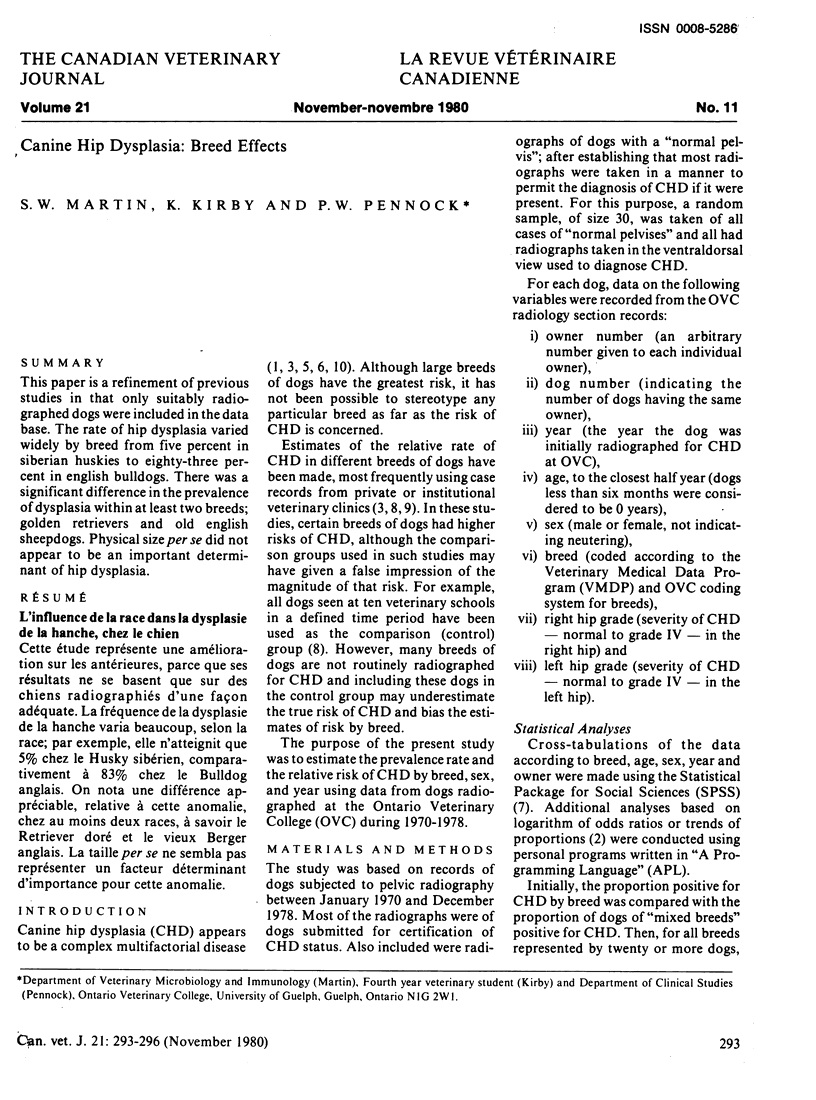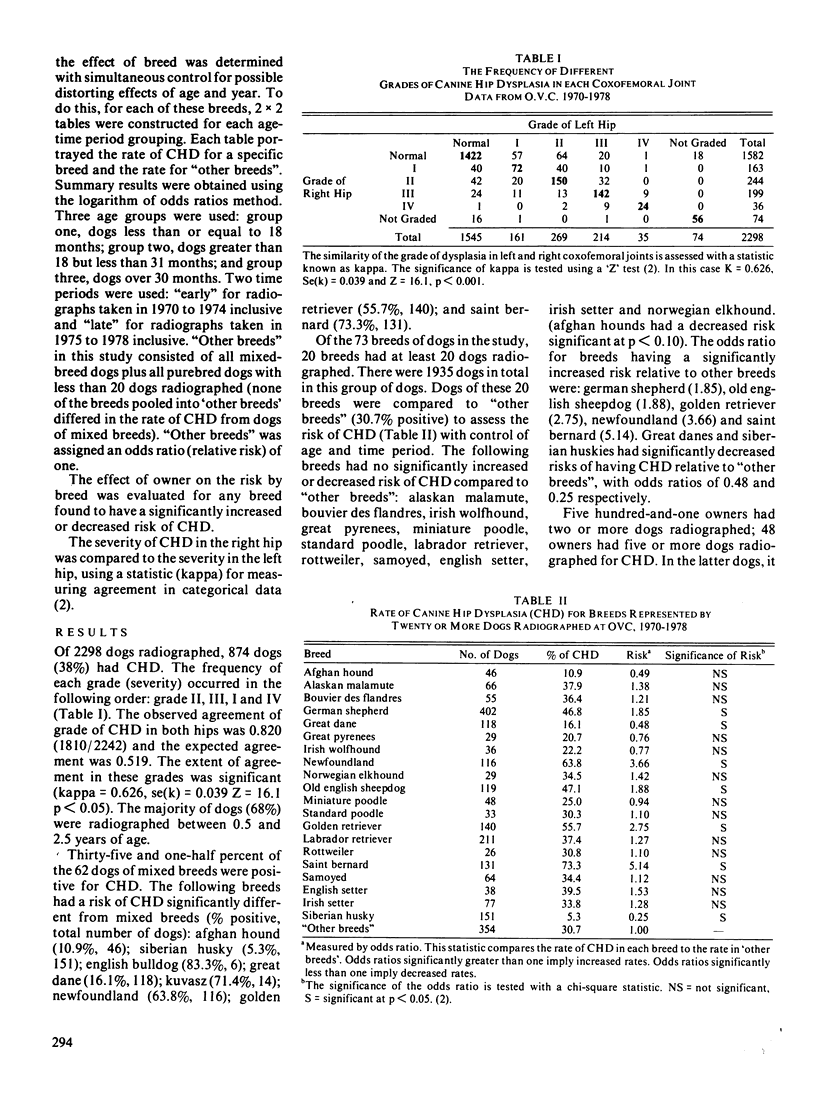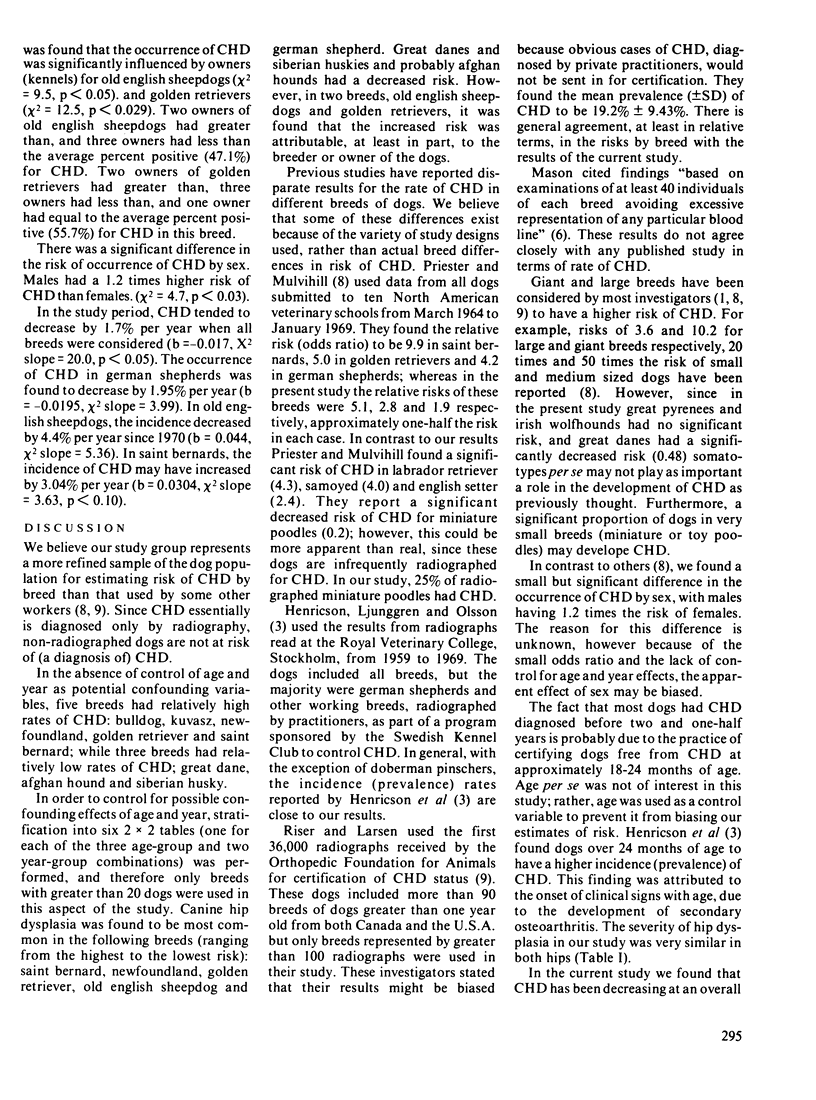Abstract
This paper is a refinement of previous studies in that only suitably radiographed dogs were included in the data base. The rate of hip dysplasia varied widely by breed from five percent in siberian huskies to eighty-three percent in english bulldogs. There was a significant difference in the prevalence of dysplasia within at least two breeds; golden retrievers and old english sheepdogs. Physical size per se did not appear to be an important determinant of hip dysplasia.
Full text
PDF



Selected References
These references are in PubMed. This may not be the complete list of references from this article.
- Henricson B., Ljunggren G., Olsson S. E. Canine hip dysplasia in sweden. Incidence and genetics. Acta Radiol Suppl. 1972;319:175–180. [PubMed] [Google Scholar]
- Leighton E. A., Linn J. M., Willham R. L., Castleberry M. W. A genetic study of canine hip dysplasia. Am J Vet Res. 1977 Feb;38(2):241–244. [PubMed] [Google Scholar]
- Mason T. A. A review of recent developments in hip dysplasia. Aust Vet J. 1976 Dec;52(12):555–560. doi: 10.1111/j.1751-0813.1976.tb05419.x. [DOI] [PubMed] [Google Scholar]
- Priester W. A., Mulvihill J. J. Canine hip dysplasia: relative risk by sex, size, and breed, and comparative aspects. J Am Vet Med Assoc. 1972 Mar 1;160(5):735–739. [PubMed] [Google Scholar]
- Riser W. H., Larsen J. S. Influence of breed somatotypes on prevalence of hip dysplasia in the dog. J Am Vet Med Assoc. 1974 Jul 1;165(1):79–81. [PubMed] [Google Scholar]
- Scartazzini R. A radiologic study of normal and dysplastic hip joints in six breeds of large dogs. Acta Radiol Suppl. 1972;319:183–185. [PubMed] [Google Scholar]


